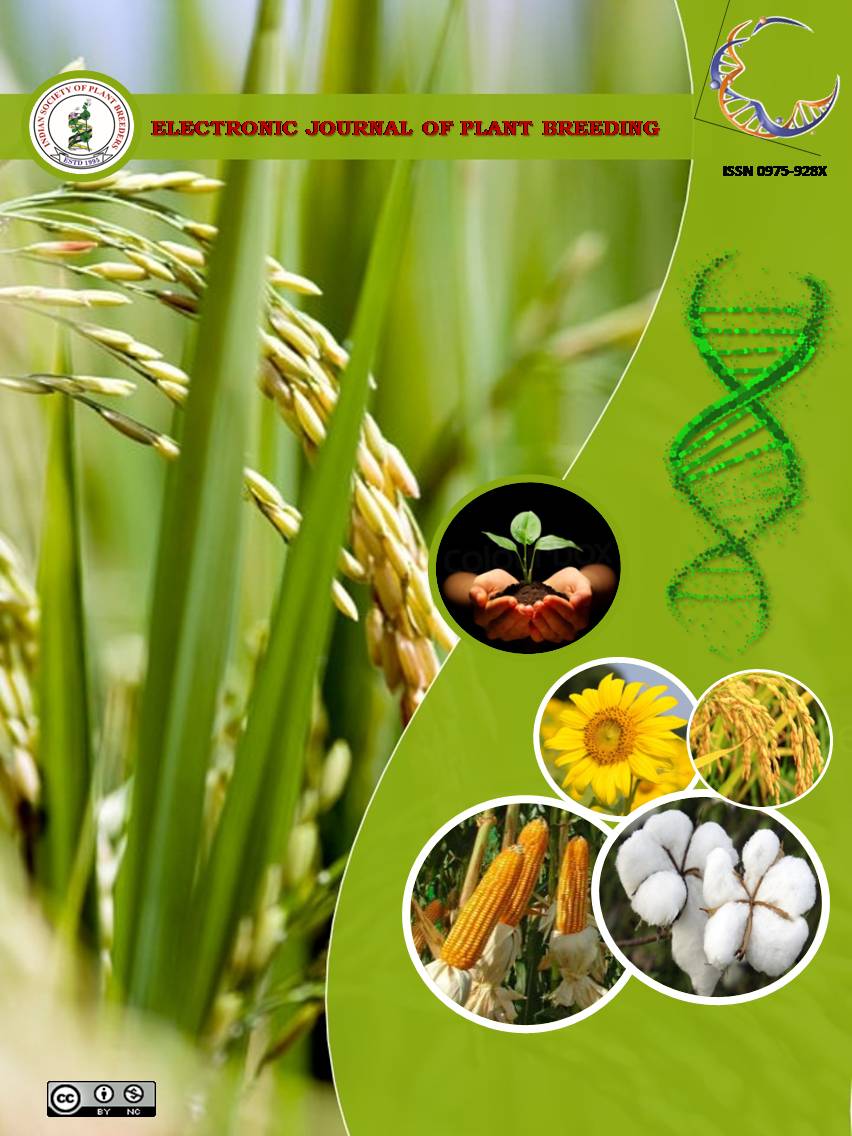Generation mean analysis for yield and submergence tolerance in high yielding varieties of rice (Oryza sativa L.)
Abstract
An investigation in rice (Oryza sativa L.) was carried out by utilizing two cosmopolitan rice varieties of Tamil Nadu namely ADT 43 and Improved White Ponni along with the donor submergence tolerance FR13A to reveal the genetics and gene action for submergence tolerance. The generation mean study was done by developing six generations viz., P1, P2, F1, F2, B1 and B2 for two cross combinations namely ADT 43 × FR 13A (Cross 1), IWP × FR 13A (Cross 2).Gene action studies for submergence tolerance through generation mean analyses revealed that all the yield and yield component traits under submergence condition were mostly influenced by dominance gene action, except for number of filled grains per panicle, total number of grains per panicle and spikelet fertility in cross 1. Regarding 1000 grain weight epistatic gene action was predominant in cross 1. In cross 2, dominant gene action alone was predominant for the trait number of productive tillers per plant whereas, the epistatic gene effects were predominant for the traits number of filled grains per panicle and total number of grains per panicle. The traits, days to flowering, plant height, number of tillers per plant, spikelet fertility, 1000 grain weight and single plant yield were controlled by additive, dominance followed by epistatic gene action. The generation mean analysis also revealed that number of filled grains per panicle, 1000 grain weight and single plant yield in cross 2 under submergence condition were much influenced by different types of gene action viz., additive, dominance and epistasis with complementary epistatic interaction. These crosses would be utilized for yield improvement through single plant selection in segregating generations. To obtain desirable segregants, the appropriate breeding method would be bi-parental mating or one or two cycles of recurrent selection followed by pedigree breeding will be effective and useful method to obtain expected improvement in rice under submergence tolerance.

It is certified that:
- The corresponding author is fully responsible for any disputes arising due to the publication of his/her manuscript.
- The article has been seen by all the authors who are satisfied with its form and content.
- The sequence of names of authors in the by-line is as per their relative contribution to this experiment, giving due credit to all scientists who made notable contribution to it.
- All the authors fully understand that inclusion of any other co-authors or exclusion of any co-authors is not possible once the article has been submitted to the journal.
- The corresponding author takes full responsibility for this article.
- The address of the organization where the research was conducted is given.
- The article is exclusive for this journal, and the results reported here have not been sent (and will not be sent during its consideration by this journal) for publication in any other journal.
- Authors agree to abide by the objective comments of referees and do agree to modify the article into a short note as per the recommendation, for publication in the Electronic Journal of Plant Breeding.
- If published in Electronic Journal of Plant Breeding, the copyright of this article would vest with the Indian Society of Plant Breeders, who will have the right to enter into any agreement with any organization in India or abroad engaged in reprography, photocopying, storage and dissemination of information contained in it, and neither we nor our legal heirs will have any claims on royalty.


